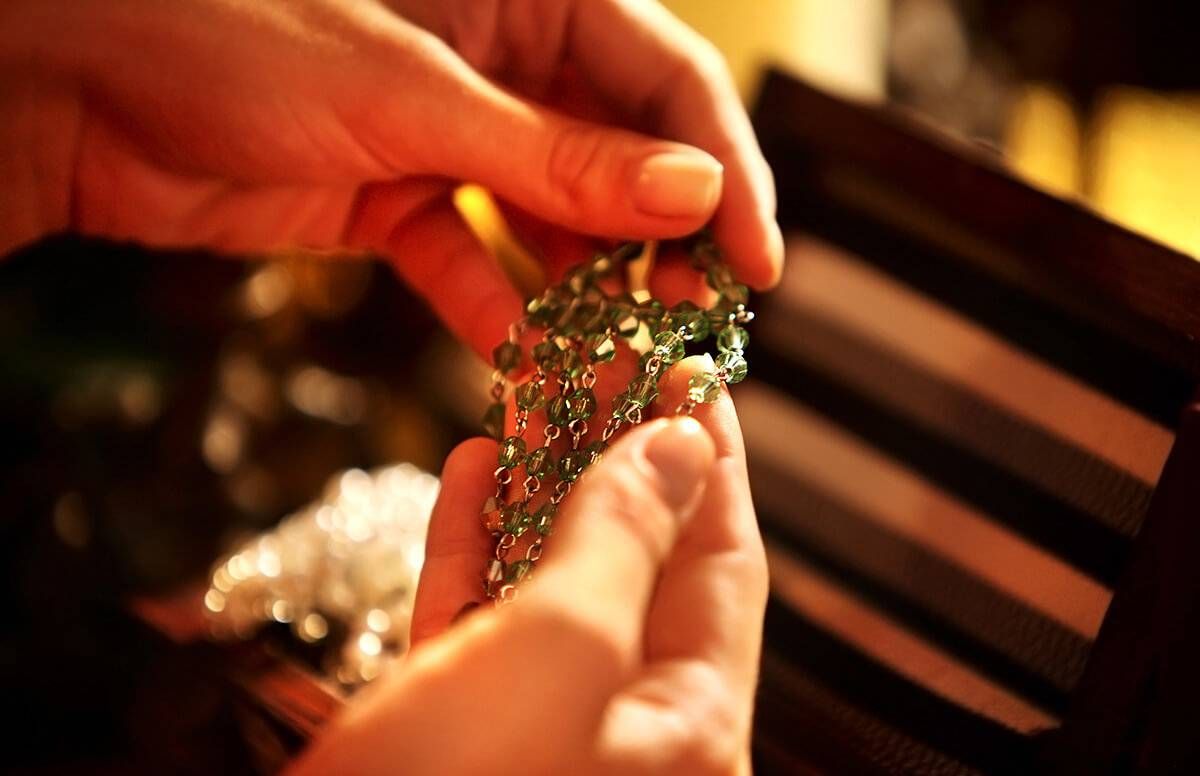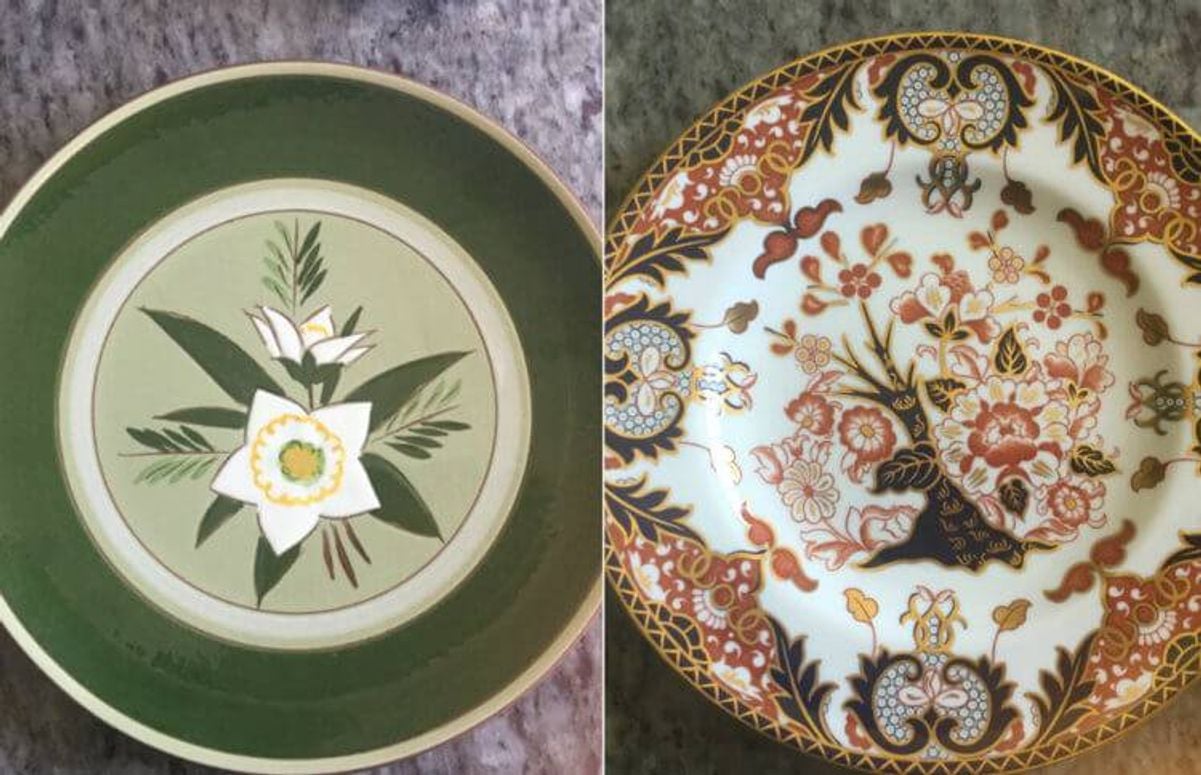How to Know If Your Parents' Stuff Has Value
An heir's guide to furniture, china, glassware, art and more
Next Avenue published a popular, if provocative, post called “Sorry, Nobody Wants Your Parents’ Stuff.” As the founders and co-owners of Nova Liquidation, a company that helps people with their parents’ stuff (and their own), we’d like to offer you help in understanding whether the stuff has value and, if so, how much, if you were to liquidate it. (For an example of how two somewhat similar items could have very different values, see the photos at the bottom of this article.)

Here are a few simple tricks the pros use:
Valuing Furniture
When it comes to furniture value, you’ve probably heard that Midcentury Modern (furniture makers such as Eames and Knoll) is hot now. But there are still buyers for the best of the best traditional makers as well. Sadly, however, the value of handmade antiques has been dropping since Nancy Reagan was in the White House.
In the end, it’s all supply and demand, and in many cases you can now easily spend more on 10 dining chairs from Restoration Hardware than for 10 made in the 1820s.
If you don’t have pieces from good makers or tremendous age, your stuff probably falls into the “brown furniture” category — think all the stuff made after WWII to furnish the starter homes of our GIs and their families. That stuff was mass-produced quickly and has very little value today other than for crafts or reuse boutiques.
Most of the best furniture from the 20 century made for the mass market was either signed or labeled in some way. Look in the top left drawer or left cabinet door. For chairs and tables, look under them. If the piece is good, it will have a label or a name clearly stamped. Some of the best makers are Baker, Kittinger, Henkel Harris, Widdicomb, Kindle, Century and Henredon.
If your pieces are earlier than 20 century, look for solid wood construction and dovetails. Another clue is see how the bottom of the drawers are joined to the sides. If the edges appear to be cut down into wedges (a term called chamfering) in order to fit into the grooves of the side rails, you’ve got an old piece — cabinet makers and sawmills were unable to get wood any thinner than that for secure construction. It took the advent of pressed woods to reach that level of strength and thinness.
If you really want to be an expert, check if there are circular cut marks on the backsides or secondary woods on the pieces. If so, you can assume they were cut at a mill after the Industrial Revolution. If the boards look wavy, they were hand-planed, and that’s good.
Valuing Silver
If you’re hoping to cash in on the stack of silver chafing dishes, trays, flatware and candlesticks your mother labored to keep clean for 50 years, don’t buy those tickets to Hawaii just yet.
Remember: after WWII, every housewife wanted to entertain in style, but not every household could afford solid silver accessories. The bulk of what was produced was silver plate, which is just a micro-thin layer of silver applied to either copper or brass. Look at the bottom of each piece. If it doesn’t say sterling, it is not silver.
The best sterling makers are Tiffany, Georg Jensen, Puiforcat and Buccellati. The value of makers like Gorham, Towle, Kirk, Steiff and Reed and Barton depends totally on the pattern; if it’s monogramed, the value is even less.
If your pieces are English or European, look for a stamp on the bottom that looks like a lion or the numbers 925, 900 or 800 — those are percentage numbers for the quantity of silver used by European makers.
Many silver pieces were stamped with elaborate alphabets or symbols to confuse or excite dinner guests. Marks like EPNS, International Silver, IS, Sheffield Silver, Triple or Quadruple plate or EP are all smoke and mirrors that refer to some kind of silver plating and shouldn’t be given much attention —only some truly old and gorgeous English silver pieces have value in the plate market.
If you are lucky enough to have a set of sterling silver sitting around, don’t be upset when a liquidator or an estate agent puts it on a scale to calculate its scrap value. In the end, only the most desirable patterns and makers have value over scrap today, and often even that isn’t much after you pay all the commissions to sell it.
Generally, since the crash of 2008, most sterling silver flatware sets have become uncollectible.
Valuing Coins
Generally, the value of coins lies in their silver content. Yes, there are exceptions for extremely rare coins, but unless your parents made special notes or treated their coins with obsessive devotion, you’re probably not looking at anything more than scrap.
Coins with the most reliable resale value are ones that have been rated by one of the two U.S. rating agencies: the Professional Coin Grading Service (PCGS) and the Numismatic Guaranty Corporation (NGC). They will be encased in permanent hard plastic sleeves that clearly state their name and level of rating (i.e. quality). Their value is easy to estimate by looking for comparable auction results.
For most other American coins, just look for the date 1964. That was generally the cut-off date for the use of silver in American quarters, dimes and half dollars (nickels only had silver during WWII — weird, right?). There are some exceptions when it comes to Kennedy half-dollars that were made with silver up to 1969.
Valuing Art
Art is very personal. Most of it was purchased because someone felt compelled to make it or someone felt compelled to buy it, and so it goes. Reselling it is a totally different reality.
Determining the value of your family’s artworks can be very simple if you strip the exercise of all emotion. Do not assume that art your parents purchased from local painters or sculptors is worth more than decoration these days.
If you can’t find a signature, try a black light in a dark room to illuminate it or look at the back for a note from a gallery or framer. Several websites record and report the sale price of every work of art at auction over the past 10+ years by artist name — for instance, Artprice.com, Findartinfo.com and Askart.com. These are wonderful places to start, but if you don’t know the artist, don’t expect a premium over decorative value. Again, there are exceptions, but that’s the general rule.
Valuing Rugs
We don’t know why this is almost always the hardest category for people to come to terms with, but we’ve often seen families fight between themselves or with estate agents over the value of rugs. Maybe it’s because 99.99 percent of the population pays retail for them and rugs are expensive. The reality, however, is that rugs are like anything else you buy to fit your taste and then try to resell.
Do you really think you’ll get $10,000 for your worn Vera Wang wedding dress? No, and that goes for your rugs, too. Yes, some rugs still sell for many thousands of dollars, but those are always hand-made versions that predate machine influence and chemical dyes.
So unless you’ve got truly antique, vegetable-dyed rugs with an unbelievably dense knot count, you will be lucky to get 10 percent of the purchase price.
To determine if you’ve got a real, handmade rug, turn over the corner and look at how the rows of knots are lined up. If they look very even with no variation of direction, then it’s probably machine-made. Also, if there is a label on the corner that looks like a giant sticker, it’s likely machine-made. Handmade rugs, by contrast, have very uneven rows of knots with irregular stitching on the corners used to finish the rug by hand. The knots will appear different in size and spacing.
Valuing China
Here’s a sad fact: 15 years ago, the auction price for a complete Reed & Barton Francis I Sterling Tea and Coffee set was no less than $30,000. Today, you can find that same set for about $10,000, and that’s before an auction house commission.
Valuing china is pretty easy because most pieces lying around have a name or mark on the bottom. That’s why Google is always a good start for finding values for them; just don’t expect to receive retail prices when you sell.
Sometimes, though, too much information can cloud your expectations. If you see a retail price for a dinner plate on eBay or Replacements.com, you need to ask yourself: “What did they pay for it and how much profit margin do they need to stay in business?” If a dinner plate is listed at $120, the markup is likely four times times the original purchase price.
As with furniture, there is a long list of manufacturers that still have a following in the resale market. The best porcelain was made by companies such as Meissen, Sevres, Minton, Wedgwood, Royal Copenhagen, Herend, Crown Derby, Worcester and Doulton. Within those makers are ranges of desirability and therefore value.
If you can’t find a name and all you see are a few slashes or symbols, you probably have a finer, hand-piece. For example, the mark for Meissen is crossed swords and the mark for Sevres is a pair of interlaced L’s. One more important clue is the absence of the words “Made in…” Such identification wasn’t required until the first decade of the 20 century.
Once you’ve done some research, it’s easy to find comparable values on eBay, but it is extremely important to look at completed sales there: the “green” numbers. Completed prices are what the item actually sold for, not what someone is asking for, which is often a retail price or higher. Remember, also that eBay takes, on average, 13 percent of the sales price as a commission.
Valuing Glassware
Values in this category have taken the greatest plunge since the 1980s, in our opinion. Current tastes have almost wiped out interest in most categories of decorative glass leaving only the very best makers at the top. Manufacturers like Tiffany, Durand, Stueben, Lalique, St Louis and Baccarat still have a following. But the market for the most beautiful table and stemware continues to dwindle to the point where you can now easily find most patterns of Waterford selling for $20 per stem at auction.
To figure out the maker of your glassware, turn the piece over and look at the center or the rim. Tilt the piece in sunlight to find an acid-etched mark. If it’s good glass, you’ll find it.
The Bottom Line on Your Parents' Stuff
The most important advice we can give, and consequently the most difficult to digest, is to absolutely forget what the purchaser paid and to instead look at these possessions from the perspective of a third party — someone who knows nothing about your history or shares one shred of your taste. Once you remove the expectations of financial reimbursement and sentiment, it will be far easier to process the estate in an orderly and stress-free manner.
Essentially you need to think like an estate liquidator:
- Separate your items into easy categories
- Look for the clues to understand quality
- Measure value against the market
- Consider what’s left as simply used consumer goods
Cheers!


